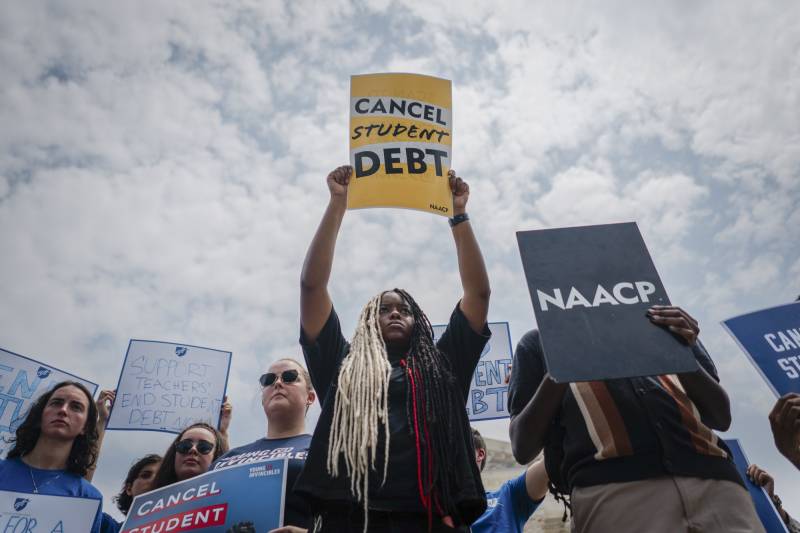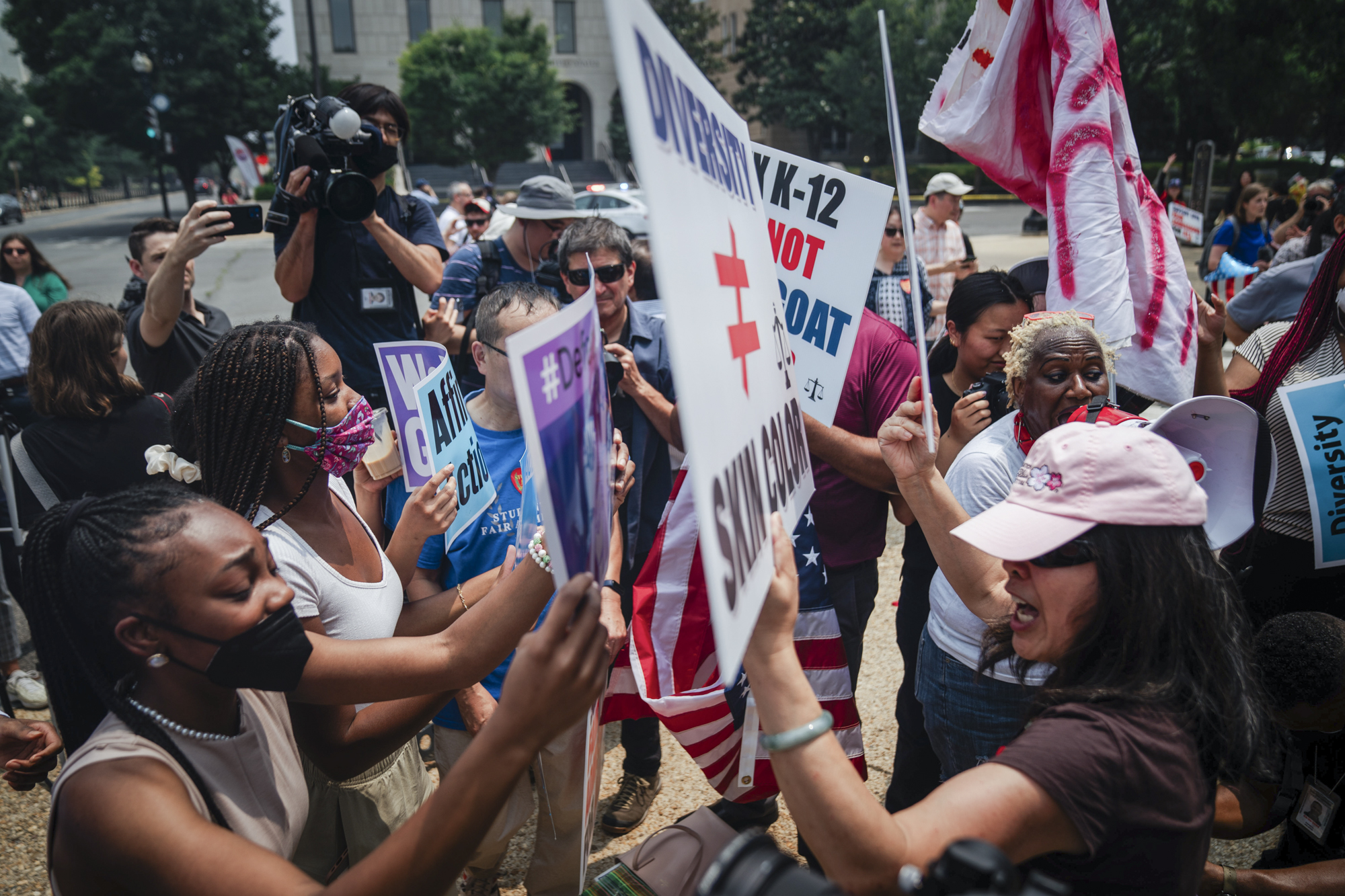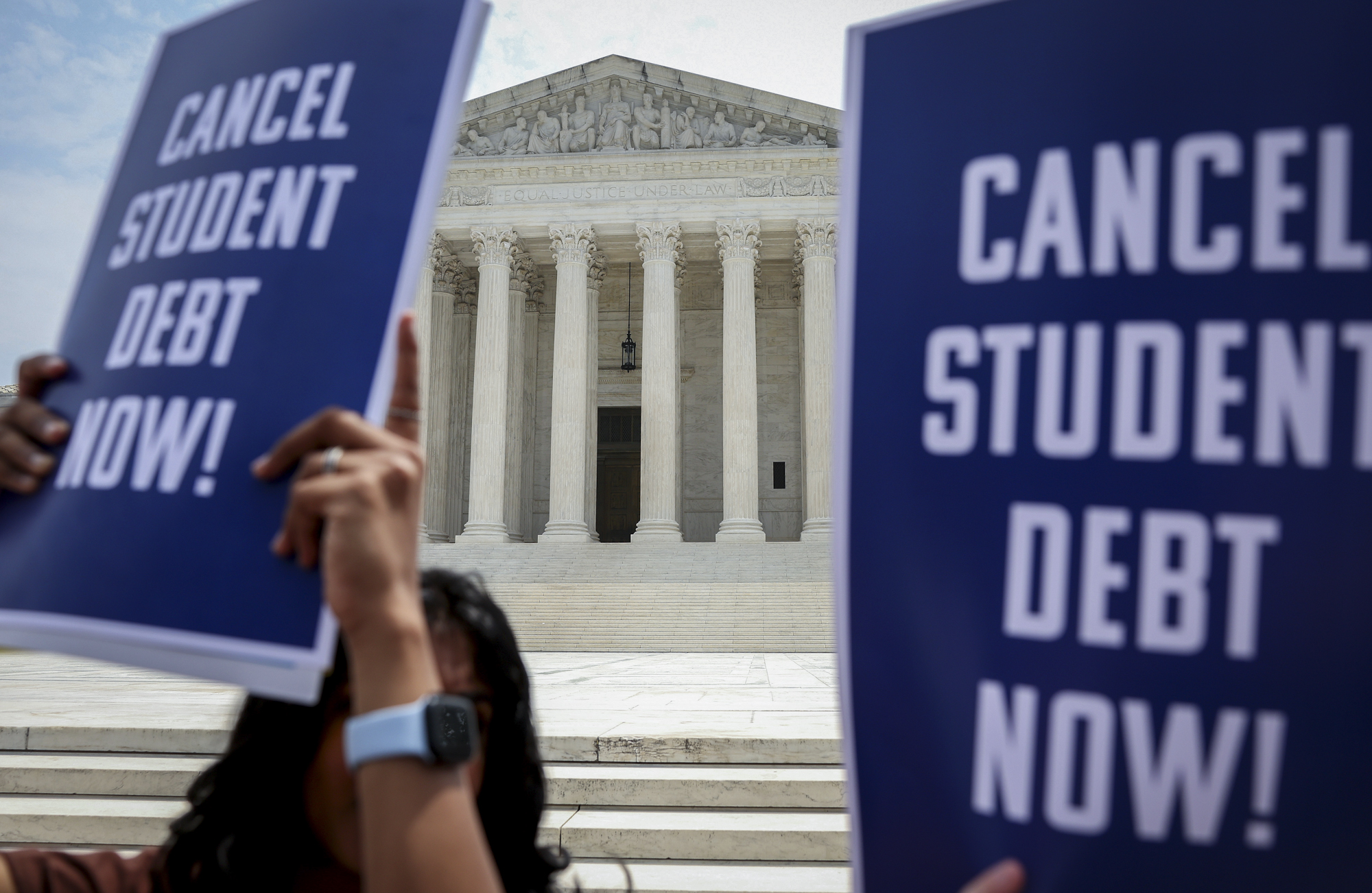Striking down affirmative action, Liss said, will not only hold back individuals, but society more broadly.
“When you have fewer students of color in college, you have fewer students of color in med school and fewer students of color who become doctors … already, we live in a country with some of the highest maternal mortality rates, especially for Black mothers,” Liss said.
“We live in a country where there are so few CEOs of color, and this only strengthens that — and it only strengthens the pipeline for white students, against the interests of students of color,” she said.
June 30: The Supreme Court strikes down Biden’s student loan forgiveness program
By ruling against the Biden administration in the case Biden v. Nebraska, the Supreme Court effectively killed the White House’s $400 billion plan to cancel or reduce federal student loan debts for millions of Americans.
The 6-3 decision, with conservative justices in the majority, said the Biden administration overstepped its authority with the plan, and it left borrowers on the hook for repayments that are expected to resume in the fall.
Biden’s loan forgiveness plan would have canceled up to $20,000 in federal student loans for 43 million people. Of those, 20 million would have had their remaining student debt erased completely.
How the student loans case will impact prospective students
Addressing the practical impact of this decision on student loans, Liss said: “A lot of students like me, and like a lot of other people, won’t go [to college] … or they won’t be able to afford to go.” It was a decision, she said, that would undoubtedly “disproportionately affect people of color and people from other underrepresented backgrounds.”
For those students who would still take on massive student loans to be able to go to college, Liss expressed deep concern about how the decision could change “the shape of their lives” on account of the sheer amount of debt they’d undertake.
When thinking about the professions that many graduates now wouldn’t feel able to embark upon — “students who might be future doctors or lawyers or legislators” — because they couldn’t afford to, Liss said it was “really f—— sad.”
“My education has been not just like a door for me, but a door for my whole family,” Liss said. “And it’s like, just slamming that door shut in people’s faces.”
What’s the future of student loan forgiveness after this ruling?
In response to the Supreme Court’s decision, Biden vowed to push ahead with a new plan to provide student loan relief for millions of borrowers, while blaming Republican “hypocrisy” for triggering the decision that wiped out his original plan.
If you have student loans, payment requirements for student loans will resume in October. But Biden said that in the coming weeks, he’ll work under the authority of the Higher Education Act to begin a new program designed to ease borrowers’ threat of default if they fall behind over the next year. Read more about the White House’s plans for student debt forgiveness after the Supreme Court ruling.
Biden’s SAVE Plan, framed as “a student loan safety net,” would also allow millions of Americans with student loans to enroll in a new repayment plan that offers some of the most lenient terms ever.
Interest won’t pile up as long as borrowers make regular payments. Millions of people will have monthly payments reduced to $0. And in as little as 10 years, any remaining debt will be canceled. The Education Department says the SAVE Plan will be available to all borrowers in the Direct Loan Program who are in good standing on their loans, and that borrowers will be notified when the new application process launches this summer. Read more about the SAVE Plan.
In addition, more than 800,000 federal student loan borrowers will still have their student loan debts automatically erased, independent of the Supreme Court’s recent decision — as part of a one-time “account adjustment” for those borrowers specifically impacted by the White House’s controversial income-driven repayment (IDR) plans.
This targeted student loan forgiveness is the result of the Biden administration’s 2022 pledge to help these borrowers after multiple complaints, lawsuits and an NPR investigation into IDR plans into mismanagement by the department and loan servicers. Read more about student loan forgiveness for these borrowers around IDR plans.


